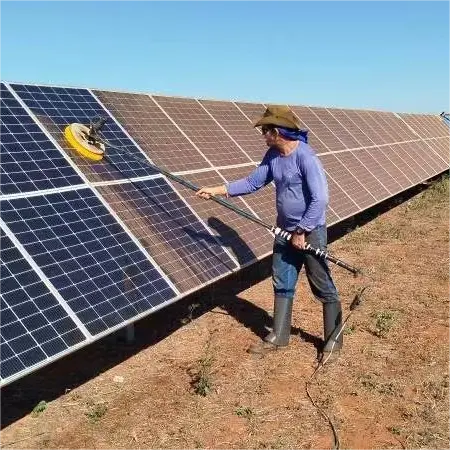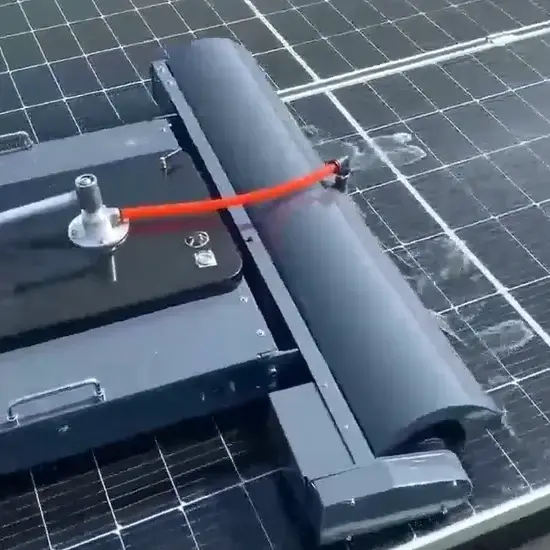With the rapid development of renewable energy, photovoltaic power generation has become an important source of green energy worldwide. However, photovoltaic components can easily accumulate dust, dirt, and bird droppings, which can affect their power generation efficiency. Therefore, regular cleaning of photovoltaic solar panels is crucial. This article will introduce the four common cleaning methods in the photovoltaic component cleaning industry, each with its own advantages and disadvantages and suitable for different application scenarios.

1. Manual Dry Cleaning
Manual dry cleaning is an intuitive and effective method for cleaning solar panels. It involves using a long-handle plush mop combined with a specialized cleaning agent to remove dust from the surface of photovoltaic modules. The primary principle is based on static adsorption, which effectively attracts dust and sand particles. Although this method can remove surface dirt quite well, its downsides are significant: the cleaning operation may be dangerous, and variations in the strength and skill of different operators can lead to different pressures on the components, potentially causing deformation or micro-cracking over time. Furthermore, dry cleaning does not always achieve optimal results, as mops can leave streaks on the panel surfaces, causing significant shadowing.
2. Manual Water Washing
Manual water washing typically employs a vehicle equipped with a water tank, such as a sprinkler truck, along with a pressure nozzle not exceeding 0.4 MPa. This method has a similar cost to manual dry cleaning and tends to yield favorable results. However, it also has its drawbacks. If the water pressure is too high, it can cause micro-cracking in the solar cells, and controlling the nozzle’s water pressure can be challenging for the operator. After washing, water spots may form on the panels’ surfaces, creating micro-shadowing that affects power generation efficiency.
3. Mechanical Cleaning Vehicles
Mechanical cleaning vehicles use automated equipment to wash photovoltaic solar panels by moving in between rows of panels. This method significantly reduces labor efforts but requires larger inter-panel spacing and structured installation, making the equipment relatively heavy and cumbersome, which can lead to uneven cleaning. Additionally, the high cost of such equipment limits its widespread adoption.
4. Cleaning Robots
Cleaning robots have emerged as a new cleaning method and are gradually replacing traditional cleaning approaches. They can be remotely controlled or operated through a centralized system, intelligently planning cleaning routes to minimize labor and water usage while overcoming limitations posed by heavy equipment. Nevertheless, cleaning robots face challenges, particularly in effectively removing stubborn stains compared to manual or mechanical cleaning methods.

Заключение
In summary, each cleaning method for photovoltaic solar panels has its pros and cons. Manual dry and water washing offer flexibility and adaptability but come with safety risks and skill requirements. Mechanical cleaning vehicles enhance efficiency but are restricted by installation and cost limitations. Cleaning robots represent a trend for future development, especially in resource conservation and labor optimization, although improvements are still needed for stubborn dirt.
Choosing the appropriate cleaning method should be based on specific cleaning needs, the scale of the photovoltaic system, and the overall economic feasibility of routine maintenance. A scientifically sound and reasonable cleaning strategy can effectively improve the power generation efficiency of photovoltaic components, supporting the sustainable development of renewable energy.